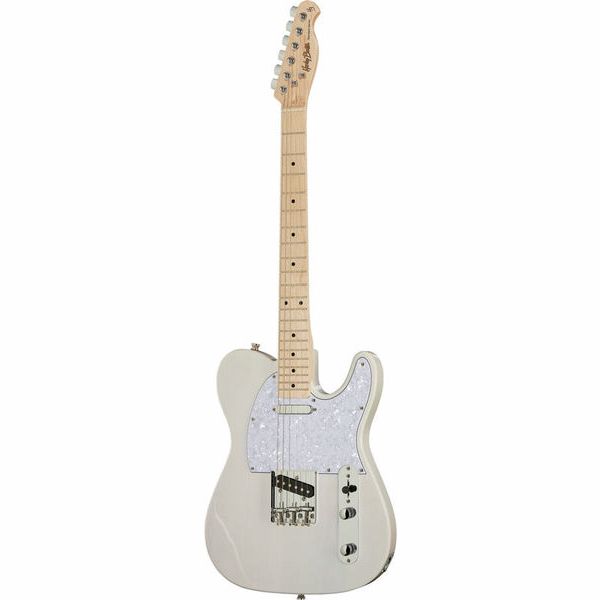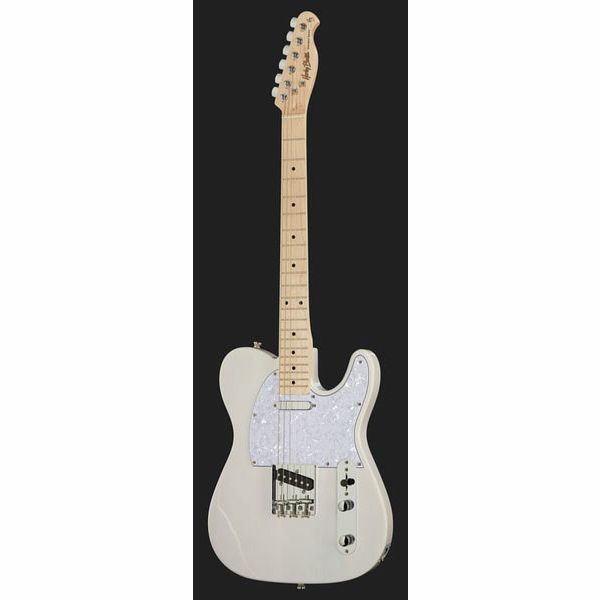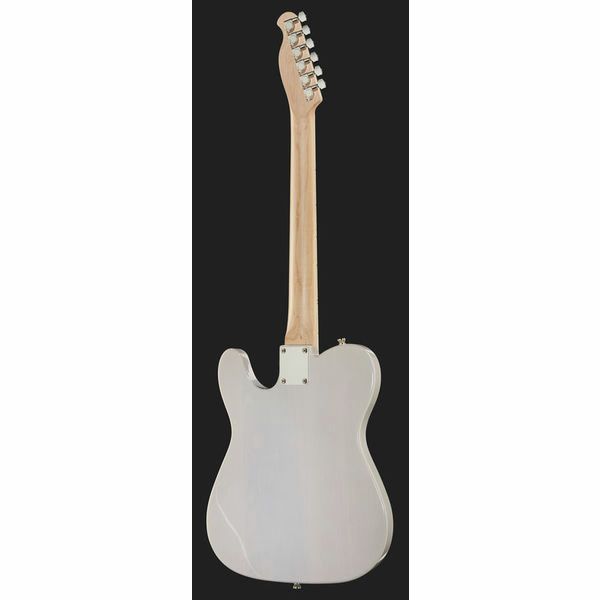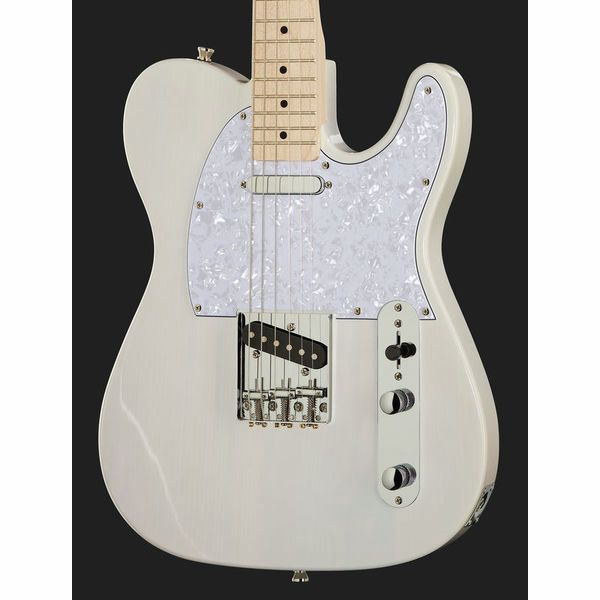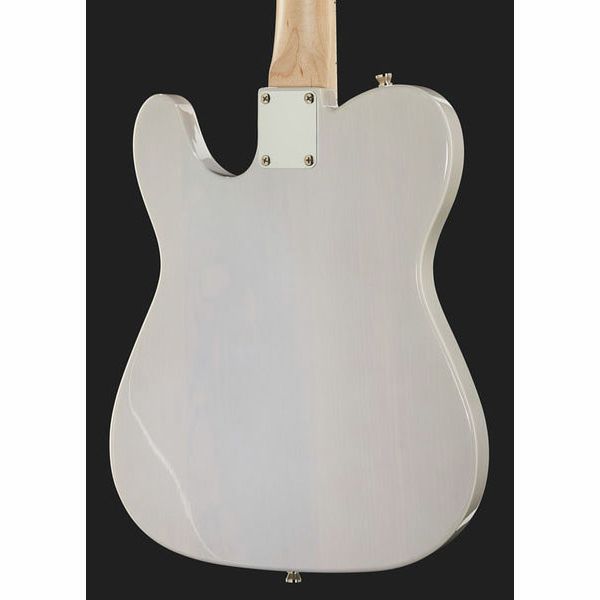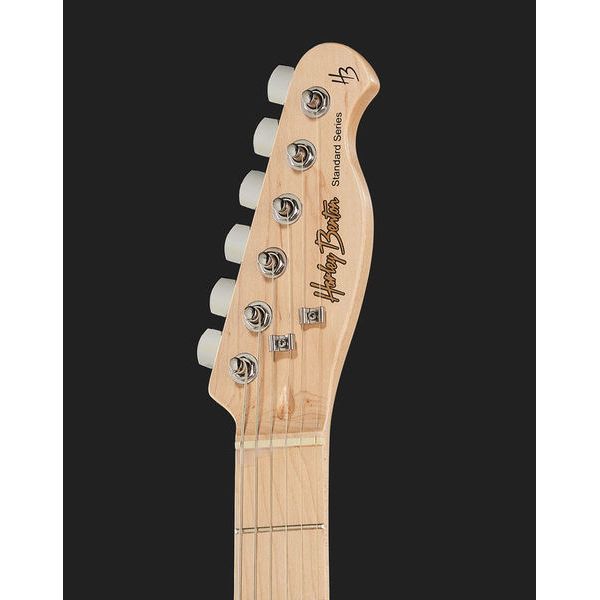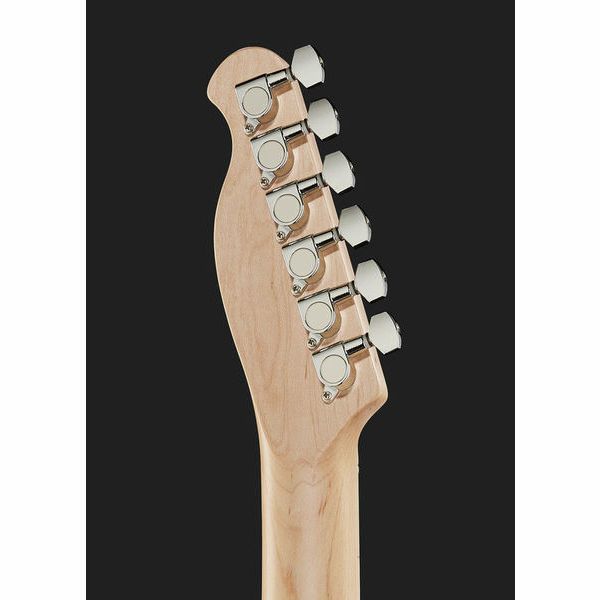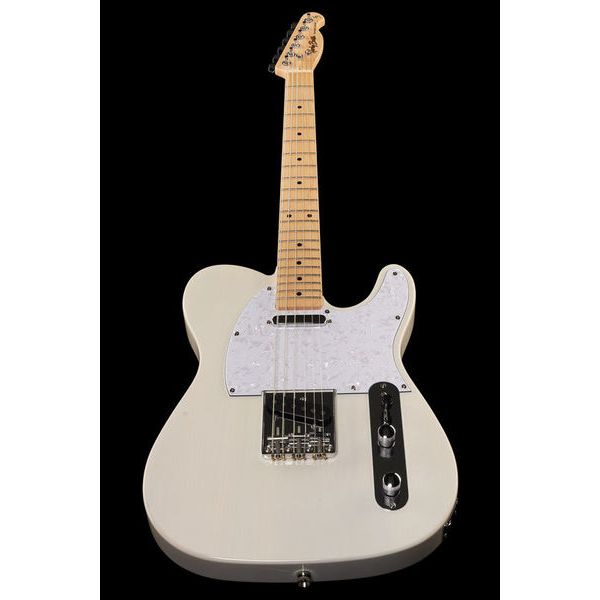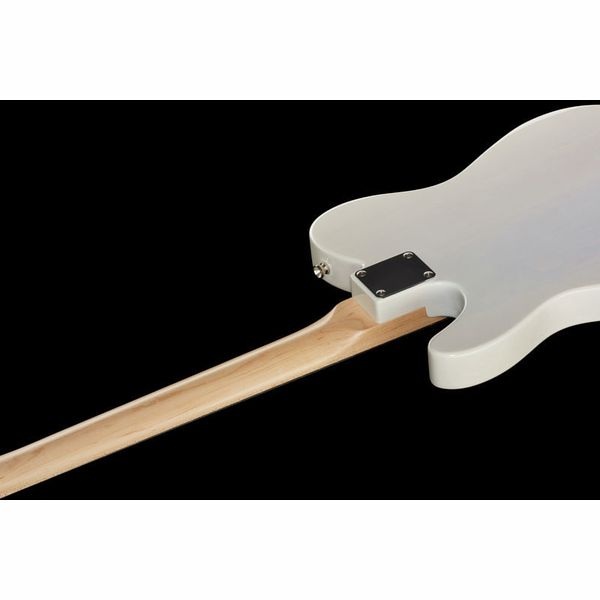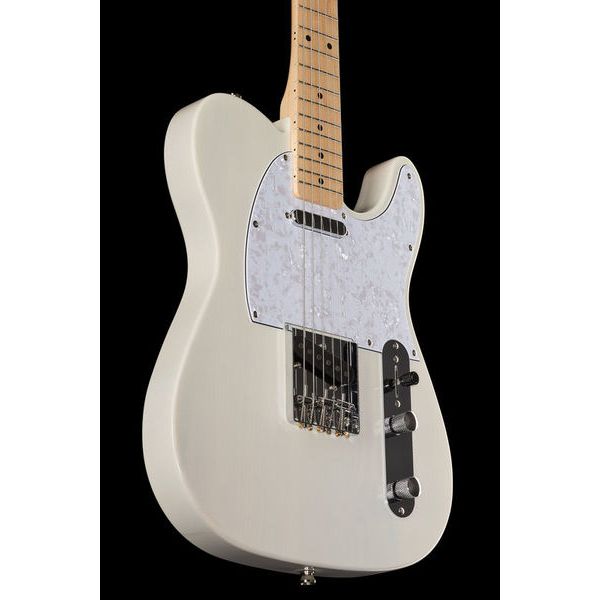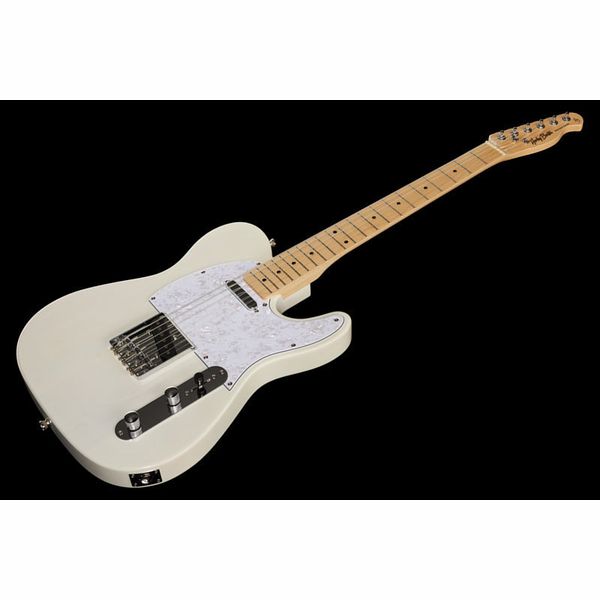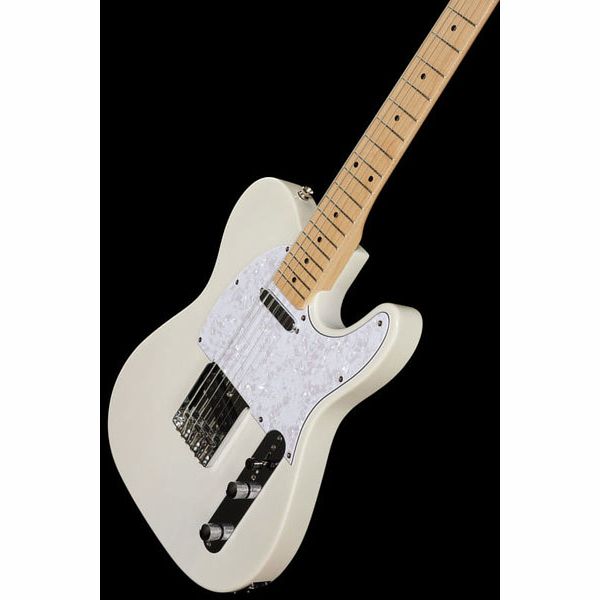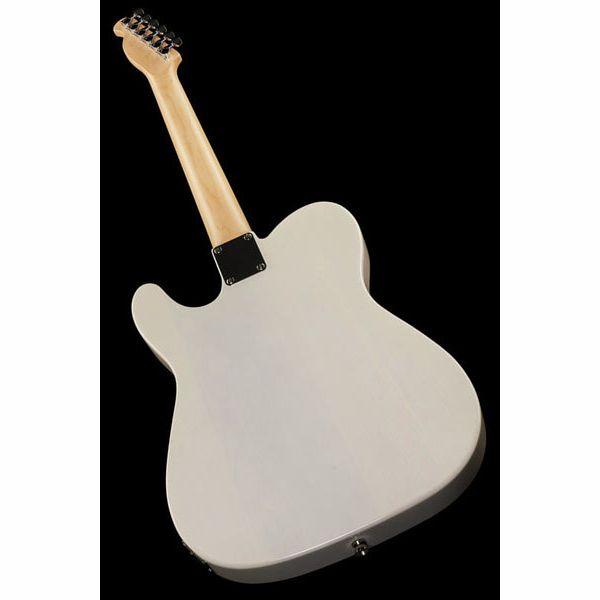Delighted with my Harley Benton TE-20 SB, I chose to try my luck again and get myself another “beater”. Just as I had promised in my TE-20 SB review, I went with Harley Benton again! This has given me a unique opportunity to compare my older TE-20 with my brand-new TE-30. Build quality wise, they seem to be on the same level, so mainly, what your extra 20 Euros get you (pricing at the time of writing) is an ash (as opposed to poplar) body wood, a vintage-style bridge (as opposed to a more modern one), a pearloid pickguard (although it is made of PVC, so it will not offgas like the celluloid ones), and a cheap cable (my TE-20 did not come with one). Some more minor differences are as follows: the TE-30 is noticably heavier, and its knobs are easier to turn than on my trusty TE-20. Now, you might ask, “How heavy is ‘heavy’?” Unfortunately, I do not own a scale, but I would guess that it is probably in the average Gibson Les Paul weight class. I have not taken my TE-30 apart yet, so I cannot speak about the type or size of potentiometers, the wiring, or the pickups. If I do take it apart, I will try to remember to update this review. Here, the comparisons end, and in the following paragraphs, I will focus solely on the TE-30.
The first thing I noticed when I opened the box was that the color was not like pictured here (at the time of writing the review). And it is definitely not my monitor because I am judging the color in contrast with the pickguard. Here, the body of the guitar is quite noticably darker than the stark-white pearloid pickguard. It reminds me of the so-called Mary Kaye Strats, which were also made of ash, and whose finish was also called Blonde. My TE-30, on the other hand, is almost as white as the pickguard! To my fellow color nerds, the color of the guitar I received is not even like Olympic White (an ever so slightly aged white). It is closer to Arctic White (the whitest Fender color)! Yes, you can still see the wood grain through it, but it does not give off a “vintage” esthetic like these photographs do. It looks more modern.
As to the quality, the only components that let this otherwise great guitar down are the tuning machines. While they hold tuning just fine, I can feel that the machining of the gears inside is not the greatest, and because of the ratio, it takes some finesse to hone in on the pitch. I believe, if Harley Benton upgraded them, this guitar would rival instruments costing a few times more. Everything else is perfectly fine: the nut is cut better than on some Fenders and Gibsons I have owned; there are no fret ends sticking out; the neck pocket is, again, tighter than on some Fenders I have seen; the potentiometers turn without any “scratchy” noise; the pickup selector feels solid; the output jack spring grips the plug firmly; the pickups sound exactly like you expect a guitar that looks like this to sound, etc. There are only a few relatively minor cosmetic defects, such as tiny scratches in the finish (which, in most lighting conditions, are all but imperceptible thanks to the white color), a few tuning machines being fitted slightly askew, and some of the holes for the screws having been drilled at an angle (which is something I have also encountered on Fenders). Even the setup is superb! Usually, cheap guitars feel as if they had been set up for playing slide, but on this one, the action was even a little too low for me. I can only imagine that for “shredders”, it would probably feel like heaven. Understandably, the frets are not polished, but they do not feel “scratchy” either. The neck is highly subjective, of course. I have large hands, and I could play this TE-30 just fine. I wish it had a slightly thicker neck, but then it would not fit most people. Maybe it is just me, but it feels slightly fatter than the neck on my TE-20. But it may just be variation due to them being sanded by hand.
An interesting detail: even though the bridge on my TE-30 is, as it is usually referred to, top-loading (meaning that the string ends are anchored at the bridge instead of being threaded through the body), there are holes in the baseplate of the bridge, and they are drilled into the body as well, just not all the way through! I guess, it is to make the conversion to string-though-the-body design a little easier.
All things considered, it is a great guitar and an incredible value for money. I would especially like to commend Harley Benton for not skimping on the setup! Yes, the looks, and especially the sounds, are really important, and impressive specifications can win over many a guitarist, but Harley Benton understand that most of these budget guitars are purchased by beginners who do not yet possess the skills necessary for setting up a guitar, and not all of those beginners have the money to pay a professional luthier. This is why they do their best to make even their least expensive models ready to be played comfortably (and intonated) right out of the box. Because of this, whenever someone asks me what is the best budget guitar for a beginner, my response is always Harley Benton.


